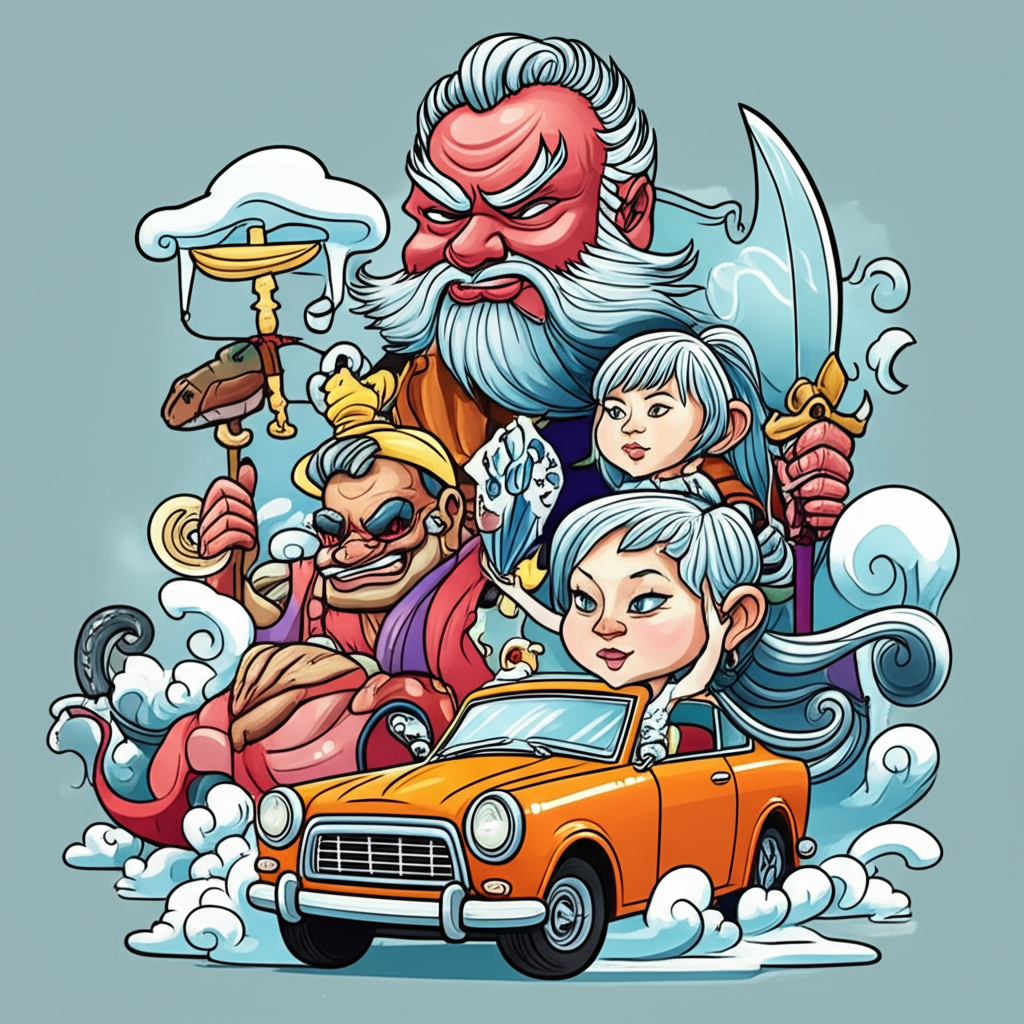
The mists that often shroud the ancient land of Izumo, nestled on the western coast of Japan, carry whispers of tales as old as the gnarled pine trees that cling to its rocky shores. Among these narratives, woven into the very fabric of the region’s folklore, are stories of the Yurei – spectral figures born from lingering earthly ties. These are not tales of divine beings or creatures to be worshipped, but rather traditional stories, passed down through generations by ancient people who sought to understand the world around them and the mysteries that lay beyond.
The era in which these myths took root was one deeply intertwined with the cycles of nature and the unseen forces that were believed to govern life and death. Ancient Japanese society, particularly in regions like Izumo, was characterized by a profound reverence for the natural world. Mountains were seen as abodes of spirits, rivers as conduits of life, and the changing seasons as manifestations of powerful, often capricious, forces. Life was often precarious, marked by natural disasters, disease, and the ever-present shadow of mortality. In such a context, understanding the transition from life to the afterlife, and the potential lingering presence of those who had passed, became a natural subject of storytelling and imaginative exploration. The world was viewed as a place where the physical and spiritual realms were not rigidly separated, and where the emotions and actions of the living could have profound effects on the departed, and vice versa.
From these fertile grounds of belief and apprehension emerged the concept of the Yurei. These are not monstrous specters in the Western sense, but rather the disembodied spirits of individuals who, due to unfinished business, intense regret, or overwhelming sorrow, are unable to fully pass into the afterlife. They are depicted as apparitions, often seen at night or in places associated with their earthly lives. Their appearance can vary, but common descriptions include pale, translucent figures, often clad in the white burial kimonos worn during funerals. Their hair is frequently long and disheveled, sometimes falling forward to obscure their faces, adding to their mournful and unsettling aura. Their limbs might be unnaturally long or contorted, reflecting the unnatural state of their existence. The Yurei are not inherently malevolent; their presence is often a manifestation of profound sadness, a desperate yearning for resolution or connection. They are bound to the earthly plane by the weight of their unfulfilled emotions, forever reliving a moment of anguish or longing.
The narrative of the Yurei is often a poignant and somber one, a reflection of the human condition. Imagine, for instance, the tale of Hana, a young woman who lived in a small village near Izumo. Hana was deeply in love with Kenji, a fisherman whose life was tragically cut short by a storm at sea. Her grief was so profound, her longing to be with him so intense, that upon her own death shortly after, her spirit found itself unable to ascend. She became a Yurei, forever bound to the shoreline where she had last seen Kenji sail. Villagers spoke of seeing her pale form on moonless nights, her silent sobs carried on the sea breeze, her translucent hand reaching out towards the waves as if to grasp a phantom lover. She was not seeking to harm, but to find the peace and reunion that had been denied her in life. Her story illustrates the core of the Yurei legend: the spirit trapped by an unresolved emotional burden, its existence a testament to the enduring power of love and loss. Another common narrative involves spirits seeking retribution for injustices suffered, their spectral forms a chilling reminder of past wrongs that demand acknowledgment.
The symbolism embedded within the Yurei myth is rich and multifaceted. At its most basic, the Yurei represents the universal human fear of death and the unknown that lies beyond. It embodies the anxieties surrounding unfinished business, the nagging feeling that one might leave something important undone, or that unresolved conflicts will continue to haunt us even after we are gone. The Yurei’s mournful existence can also be seen as a symbolic representation of the persistent echoes of the past, the way memories and emotions can continue to influence the present, even in subtle and unseen ways. They might also serve as cautionary tales, reminding individuals of the importance of living a life free from deep regret and of fulfilling their earthly responsibilities, lest their spirits be forever tethered. In a broader sense, the Yurei can be interpreted as a manifestation of the collective anxieties of a society, a way for people to grapple with the often-harsh realities of life and death through shared stories and imaginative constructs.
In the modern world, the Yurei has transcended its origins as a mere folktale and has found a vibrant life in contemporary media and cultural studies. Japanese horror, in particular, has embraced the Yurei with great success. Films like "Ringu" (and its American remake "The Ring") have popularized the image of the vengeful, long-haired female spirit, bringing a specific interpretation of the Yurei to a global audience. In literature, video games, and anime, Yurei are frequently depicted as antagonists, their ghostly presence fueling suspense and fear. Beyond entertainment, scholars of folklore and cultural studies analyze the Yurei as a lens through which to understand traditional Japanese beliefs about death, the afterlife, and the enduring impact of emotion. They are studied as a fascinating aspect of cultural heritage, offering insights into the imaginative landscapes of past societies.
As we reflect on these ancient stories, it is important to remember that the Yurei are creations of human imagination, born from the traditions and beliefs of past peoples. They are narratives that offer a glimpse into how ancient cultures sought to make sense of the world and the mysteries of existence. For us, as Muslims, we recognize that the ultimate reality of creation and existence rests solely with Allah, the Almighty, the Creator of all seen and unseen. He is the Sustainer of the universe, and to Him alone do we turn for guidance and understanding. The stories of the Yurei, therefore, serve not as objects of belief, but as valuable artifacts of cultural heritage, illustrating the power of human storytelling to explore complex emotions, fears, and the enduring human desire to understand our place in the grand tapestry of existence. They remind us of the richness of cultural diversity and the enduring legacy of human imagination.





